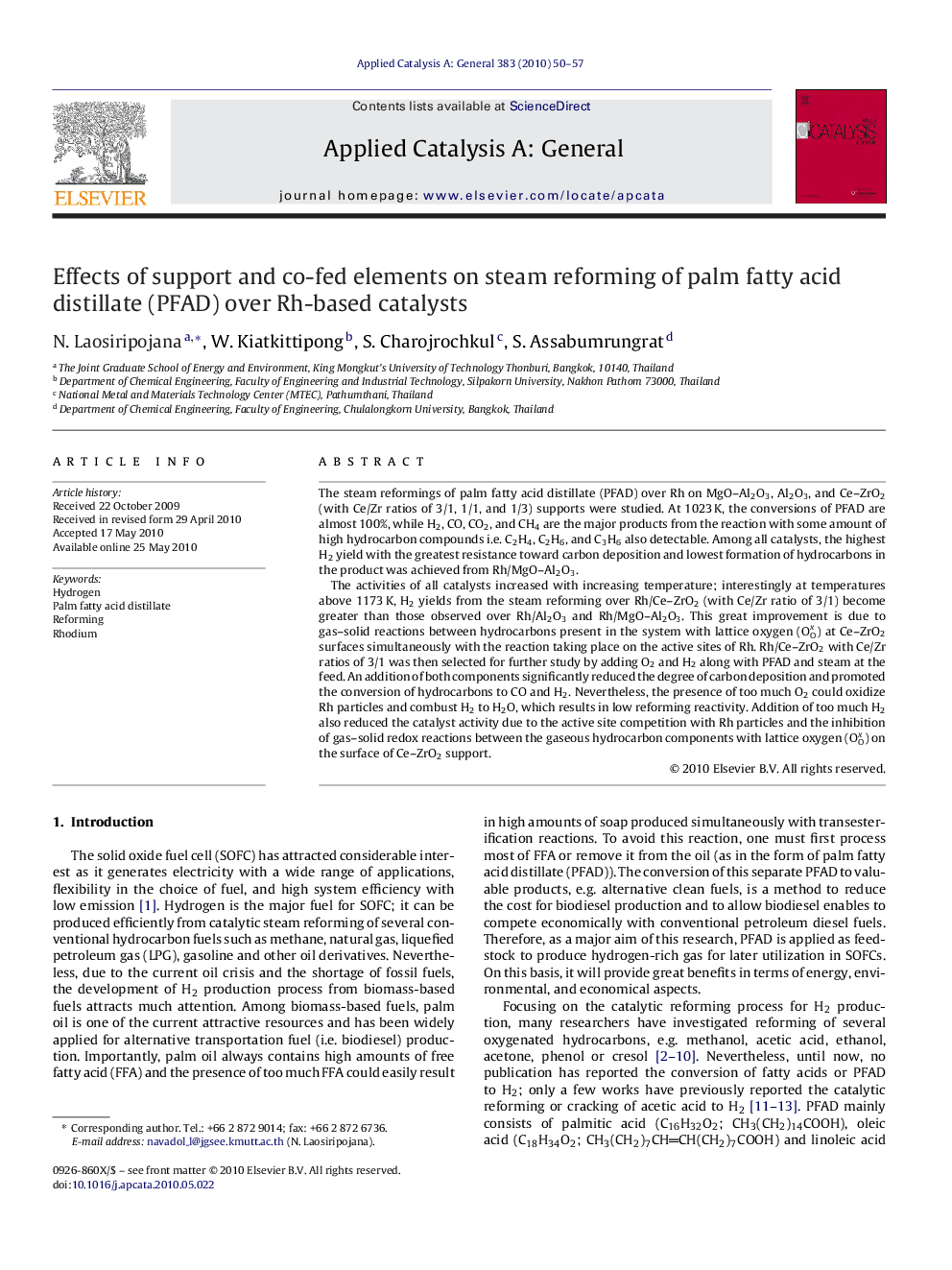| Article ID | Journal | Published Year | Pages | File Type |
|---|---|---|---|---|
| 41996 | Applied Catalysis A: General | 2010 | 8 Pages |
The steam reformings of palm fatty acid distillate (PFAD) over Rh on MgO–Al2O3, Al2O3, and Ce–ZrO2 (with Ce/Zr ratios of 3/1, 1/1, and 1/3) supports were studied. At 1023 K, the conversions of PFAD are almost 100%, while H2, CO, CO2, and CH4 are the major products from the reaction with some amount of high hydrocarbon compounds i.e. C2H4, C2H6, and C3H6 also detectable. Among all catalysts, the highest H2 yield with the greatest resistance toward carbon deposition and lowest formation of hydrocarbons in the product was achieved from Rh/MgO–Al2O3.The activities of all catalysts increased with increasing temperature; interestingly at temperatures above 1173 K, H2 yields from the steam reforming over Rh/Ce–ZrO2 (with Ce/Zr ratio of 3/1) become greater than those observed over Rh/Al2O3 and Rh/MgO–Al2O3. This great improvement is due to gas–solid reactions between hydrocarbons present in the system with lattice oxygen (OOx) at Ce–ZrO2 surfaces simultaneously with the reaction taking place on the active sites of Rh. Rh/Ce–ZrO2 with Ce/Zr ratios of 3/1 was then selected for further study by adding O2 and H2 along with PFAD and steam at the feed. An addition of both components significantly reduced the degree of carbon deposition and promoted the conversion of hydrocarbons to CO and H2. Nevertheless, the presence of too much O2 could oxidize Rh particles and combust H2 to H2O, which results in low reforming reactivity. Addition of too much H2 also reduced the catalyst activity due to the active site competition with Rh particles and the inhibition of gas–solid redox reactions between the gaseous hydrocarbon components with lattice oxygen (OOx) on the surface of Ce–ZrO2 support.
Graphical abstractThe steam reformings of palm fatty acid distillate (PFAD) over Rh on MgO–Al2O3, Al2O3, and Ce–ZrO2 supports were studied. At 1023 K, Rh/MgO–Al2O3 showed the greatest reactivity; nevertheless, above 1173 K, the reforming reactivity of Rh/Ce–ZrO2 become greater due to the occurring of redox reactivity over Ce–ZrO2 simultaneously with the reaction taking place on the active site of Rh.Figure optionsDownload full-size imageDownload high-quality image (126 K)Download as PowerPoint slide
